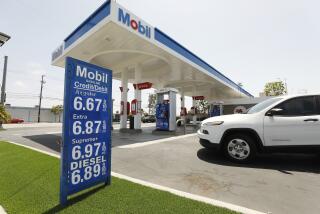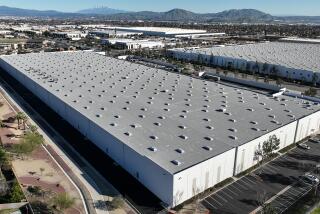SANTA ANA : Gas Station Design Proposal on Agenda
- Share via
The City Council tonight will consider a proposed ordinance that would place stricter design standards on new gas stations or auto repair shops.
The ordinance, aimed at stations with convenience stores, would affect future stations or those planning extensive remodeling, Assistant City Planner Kenneth Adams said.
The new standards would require the stations to have 15 feet of frontage landscaping, five-foot planters around all buildings, parking next to convenience stores, a wall at least six feet high along the rear and side property lines, air and water hoses, and enough room for two-way traffic in some areas.
While the city contends that the new requirements would ensure that stations and shops are aesthetically acceptable, the president of a La Habra-based engineering company that specializes in designing auto service stations called the standards “absurd.”
“What the city is proposing doesn’t make sense,” said Leo Urquiza, president of Da Vinci Engineering Inc. “There are too many things that won’t work.”
The ordinance would place in limbo a $2-million rebuilding project designed by Urquiza’s firm for a 26-year-old Exxon station at the northeast corner of Edinger and Grand avenues.
“When they thought up these standards, they didn’t take into consideration the size of each individual property,” Urquiza said. “This station just isn’t big enough at approximately 1,000 square feet to fit in all these requirements.”
Roy Moyer, who has leased the gas station for seven years, said the rebuilding project that would be paid for by Exxon would triple his business.
Urquiza said the city’s proposal would shrink the size of auto service stations and curtail traffic flow in the stations, most of which rely on money from customers who stop long enough to buy prepackaged food and other small items at the stations’ convenience stores.
With the new standards in place, Urquiza said, customers will have a difficult time getting in and out of the station, which could result in a loss of business.
Adams doesn’t buy that reasoning.
“I’m hard-pressed to believe that people are not going to stop to buy gas because of traffic flow,” Adams said. “They are going to buy gas according to price, not traffic.”
More to Read
Sign up for Essential California
The most important California stories and recommendations in your inbox every morning.
You may occasionally receive promotional content from the Los Angeles Times.










